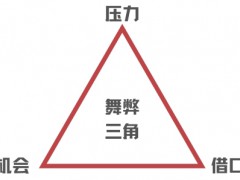据天然气新闻2021年4月9日休斯敦报道,,美国最大的液化天然气(LNG)出口商钱尼尔能源公司4月9日表示,全球LNG需求预计将在2040年前增加,但由于全球继续采取行动减少温室气体排放,全球LNG需求预计将在2024年以后出现下降,这将给美国现有的液化终端运营商和项目开发商带来风险。
这些结论是在一份评估全球正在进行或正在审议的减缓气候变化政策和趋势的长期影响的报告中得出的。
北美LNG出口商正面临要求他们证明从页岩气中生产的LNG能够推动能源转型,更多地使用更清洁的燃料,并帮助(而非阻碍)买家实现减排目标的压力。与此同时,他们必须解决未来化石燃料需求下降将如何影响其增长目标的问题。一些开发商不得不推迟或取消新项目。
钱尼尔能源公司在报告中表示,“通过保持严格的资本投资和回报战略,与预期的市场趋势相一致,钱尼尔能源公司可以将2040年以后需求高峰对其业务的风险降到最低。”
钱尼尔能源公司的分析基于三种情景。国际能源署(IEA)发布的第一种情景考虑了现有的政策框架和已宣布的政策意图,包括巴黎协定,并反映了这些框架对能源部门到2040年的潜在影响。第二种情景也由国际能源署发布,涉及更广泛的可持续发展。第三种情景是麦肯锡咨询公司发布的《2050年全球天然气展望》的一部分。
此外,钱尼尔能源公司还根据预计的供应、需求、成本和碳定价对LNG项目进行了成本曲线分析。
报告称,在这三种情景下,全球对LNG的需求将从2020年的水平增加到2040年,这将导致不同程度的供应缺口。“除了现有的和在建的LNG项目外,还需要额外的LNG供应来满足这一需求。”
报告补充称,“继续采取行动减少全球温室气体排放,可能会导致全球LNG需求在2040年以后下降。”
钱尼尔能源公司希望在今年年底之前从其第9条和至今为止的最后一条液化生产线开始生产LNG。
钱尼尔能源公司还提议在其德克萨斯工厂进行高达1000万吨/年的中等规模生产线扩建。然而,该公司尚未做出最终投资决定。钱尼尔能源公司根据市场和气候变化影响的考虑,对其增长计划采取了审慎的方式。去年12月,钱尼尔能源公司首席执行官杰克·弗斯科在一次采访中表示,这个项目“时间合适就会立马启动”。
作为美国最大的LNG出口商,钱尼尔能源公司是其在液化过程中使用的物理气体的主要买家。从美国墨西哥湾沿岸到加拿大东北部,再到加拿大西部,大部分天然气都产自页岩盆地。
今年2月,钱尼尔能源公司表示,该公司将向其LNG客户提供其在美国两个出口终端生产的每批LNG货物相关的排放数据,以使其环境足迹更加透明。
排放目标
由于有严格的碳排放目标,欧洲公用事业公司正面临压力,不愿签署进口美国页岩气的新协议。法国Engie在2020年11月表示,该公司已停止与美国NextDecade公司就一项LNG供应协议的谈判。
在其题为《气候情景分析:过渡性风险》的新报告中,钱尼尔能源公司表示,无论其考虑的情景或其他市场因素的影响如何,其全服务商业模式都将具有弹性。
报告称,“市场将如何发展的不确定性,以及成本竞争力的持续重要性,强化了以自律方式配置资本的重要性。”
报告说,“对能源政策、市场趋势和LNG商业周期的持续监测将继续对商业决策起到重要作用。虽然成本是最主要的,但商业创新、灵活性和非经济因素,如声誉和可靠性,将是竞争激烈的全球市场中有价值的区分因素。”
李峻 编译自 天然气新闻
原文如下:
LNG demand may fall post 2040 due to global GHG emissions policies: Cheniere
Cheniere Energy expects LNG demand to increase until 2040, though it may decline beyond that due to continued global action to reduce greenhouse gas emissions, presenting risks for existing US liquefaction terminal operators and project developers, the company said April 9.
The conclusions were issued in a report assessing the long-term impact of climate change mitigation policies and trends that are in process or under consideration globally.
North American exporters are under pressure to show that LNG produced from shale gas can bridge the energy transition to greater use of cleaner-burning fuels and aid rather than impede buyers' carbon reduction goals. At the same time, they must address how a future of lower demand for fossil fuels will impact their growth goals. Some developers have delayed or canceled new projects.
"Cheniere can minimize the risk beyond 2040 to its business from peak demand by maintaining a disciplined capital investment and return strategy, consistent with expected market trends," the company said in the report.
Cheniere's analysis relied on three scenarios. One produced by the International Energy Agency accounts for existing policy frameworks and announced policy intentions, including the Paris Agreement, and reflects the potential impact of these on the energy sector out to 2040. The second, also published by the IEA, involves sustainable development more generally. The third, by consulting firm McKinsey, is part of its global gas outlook to 2050.
In addition, Cheniere incorporated cost-curve analysis of LNG projects based on projected supply, demand, costs and carbon pricing.
"Under all three scenarios, demand for LNG increases from 2020 levels through 2040, resulting in supply gaps to varying degrees," the report said. "Additional LNG supply, i.e., beyond existing and under construction liquefaction projects, would be needed to meet this demand."
The report added that "continued action to reduce global GHG emissions may cause LNG demand to decline beyond 2040."
Cheniere hopes to be producing LNG from its ninth and, for now, final liquefaction train by the end of this year.
The company has also proposed an up to 10 million mt/year mid-scale train expansion at its Texas facility. It has yet to make a final investment decision, however, as it takes a measured approach to its growth plans in light of market and climate change impact considerations. In December, CEO Jack Fusco said in an interview that the project "will happen when it happens."
As the biggest US LNG exporter, Cheniere is a major buyer of physical gas that it uses in the liquefaction process. Much of the gas is drilled in shale basins stretching from the US Gulf Coast to the Northeast to Western Canada.
In February, Cheniere said it would give its LNG customers emissions data associated with each cargo it produces at its two US export terminals, in a bid to make its environmental footprint more transparent.
Emissions goals
With strict carbon emissions goals, European utilities are being pressured to shy away from signing new deals for importing US shale gas. France's Engie said in November 2020 that it had halted talks with NextDecade about a supply deal tied to the developer's proposed Rio Grande LNG facility in Texas.
In its new report, titled "Climate Scenario Analysis: Transitional Risk," Cheniere said it believes its full-service business model will be resilient regardless of the impact of the scenarios it considered, or other market factors.
"The uncertainty in how the market will evolve and the continued importance of cost competitiveness reinforce the importance of a disciplined approach to deploying capital," the report said.
"ongoing monitoring of energy policies, market trends and the LNG business cycle will continue to be important to inform business decisions. While cost is paramount, commercial innovation, flexibility and non-economic factors, such as reputation and reliability, will be valuable differentiators in a competitive global market."
免责声明:本网转载自其它媒体的文章,目的在于弘扬石化精神,传递更多石化信息,并不代表本网赞同其观点和对其真实性负责,在此我们谨向原作者和原媒体致以敬意。如果您认为本站文章侵犯了您的版权,请与我们联系,我们将第一时间删除。







